I am distressed that a long established Coral bark Japanese maple (Acer palmatum ‘Sango-Kaku’) has been lost in the swampy lower garden (along with two dogwoods and an assortment of shrubs), but this is far from my favorite maple, so the loss is not heartbreaking. Since we’re up seven inches of rainfall for the year (and plus thirty-five last year), it appears the area might remain soggy forever, so instead of another Japanese maple I’ve planted a Bottlebrush buckeye ( Aesculus parviflora) in its place. I had to move quickly while digging the hole to keep from sinking to my knees in the muck. No matter how smitten I might be with Japanese maples, there are parts of the garden where they are not best suited, and this new swamp is one of those.
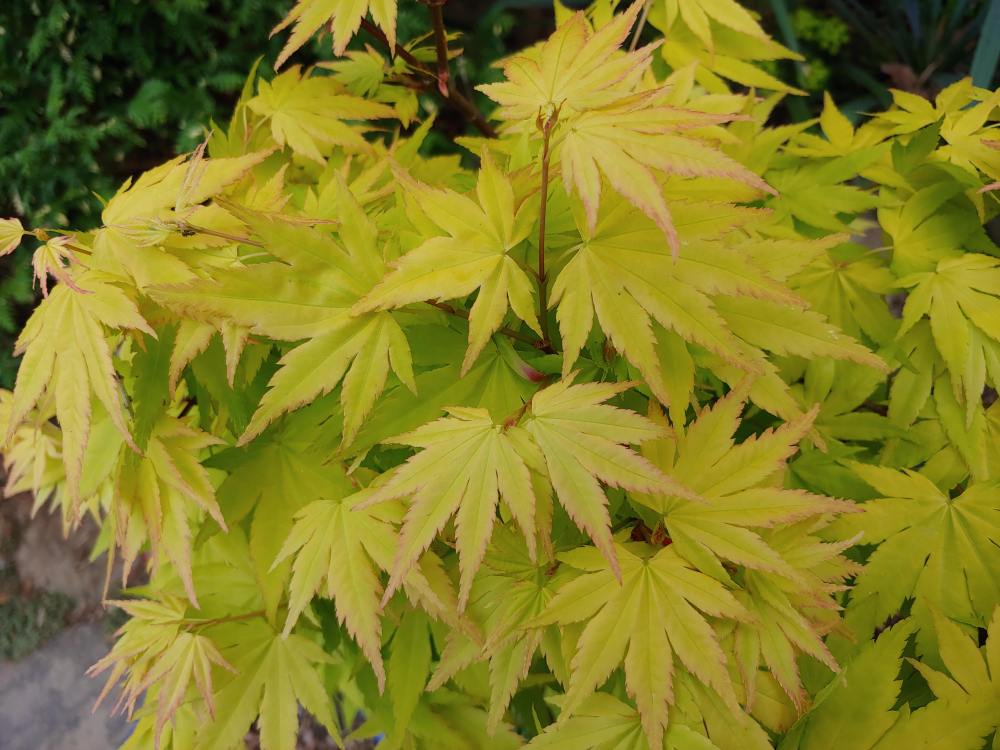
If there’s a plant in the garden that some folks (my wife) could legitimately argue there are more than are necessary, the easy answer is Japanese maples, though this is strictly an outsider’s view and unquestionably not my own. I have no intention of providing further evidence for my wife’s benefit by providing an inventory, but there are somewhere north of thirty in the garden, which of course, does not include dozens of seedlings that are occasionally dug up and transplanted or given away, but usually are weeded out.
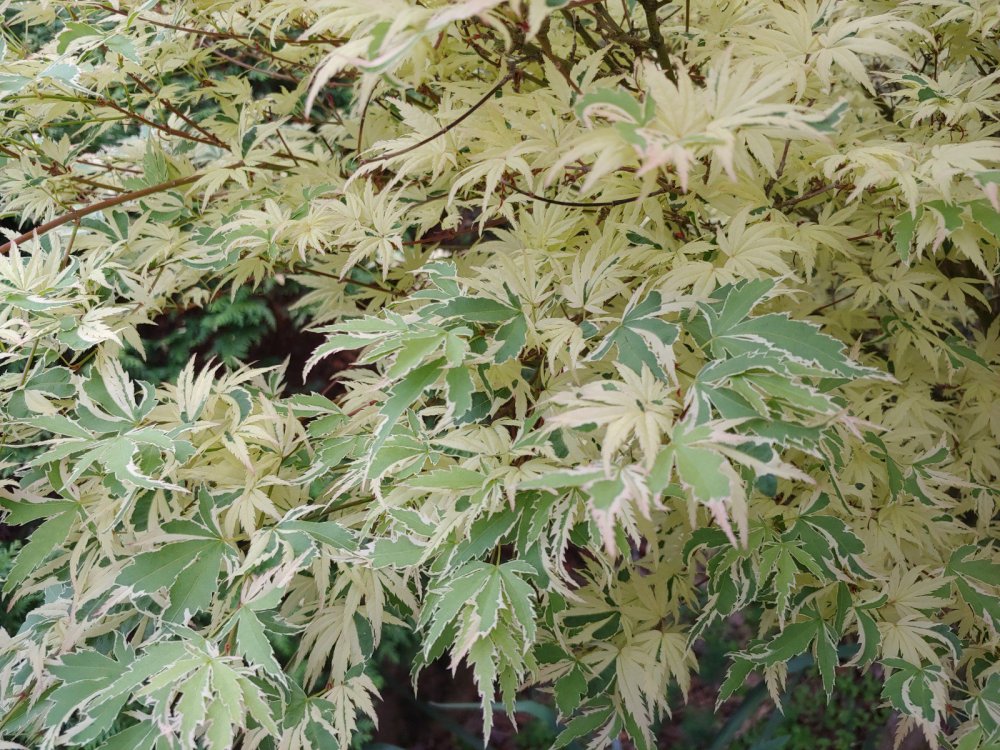
While red leafed Japanese maples are most popular in garden centers, I am quite certain an inventory would reveal more green and yellow leafed maples in this garden, and while none could be considered rare, there are a number that are at least uncommon. As with many collections, and probably with most gardeners who are easily distracted to favor whatever is flowering today, I have trouble selecting a favorite, though a few maples were procured with a bit of difficulty and this endears them somewhat above others.
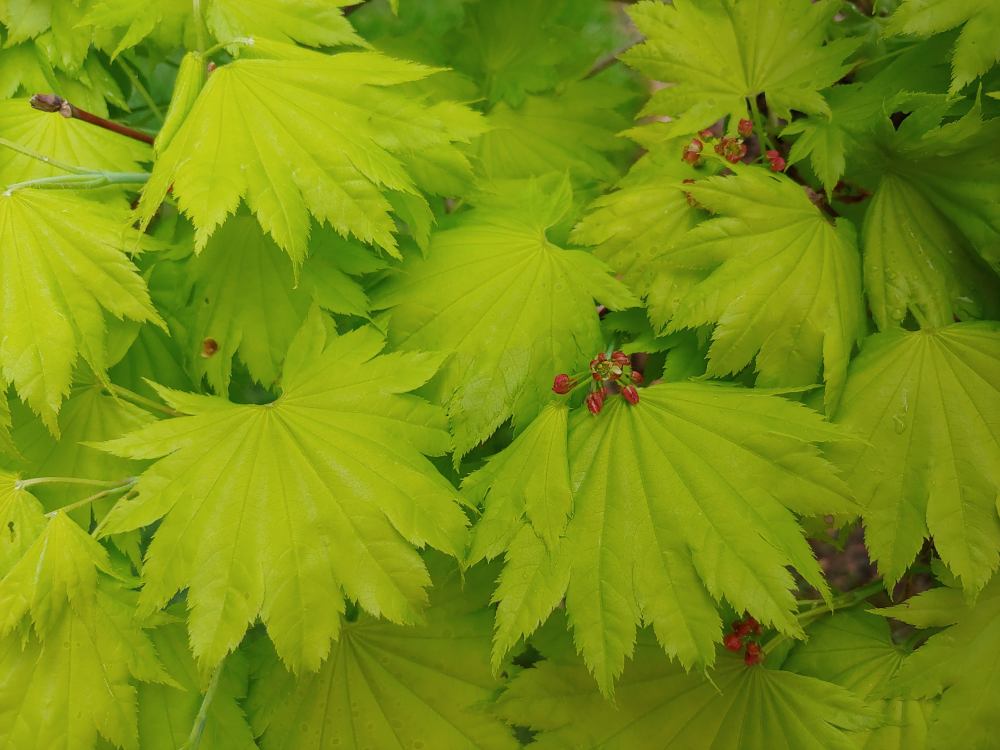
A Golden Full Moon maple (Acer shirasawanum ‘Aureum’) was left behind by an Oregon maple grower with bark on the lower trunk stripped by rabbits, and considered too damaged to sell. That is, except for a buyer who had the tremendous good fortune to stumble upon a tree he had long searched for, a Full Moon maple six feet tall, and and for an excellent price. Long ago, the injury healed, which I didn’t question from the start since Japanese maples are quite forgiving. I think a Lion’s Head maple (Acer palmatum ‘Shishigarshira’) also came out of this field, and a second Floating Cloud maple (A. palmatum ‘Ukigumo’) to add to the first that was a scrawny newcomer at the time, though now all have gained in stockiness.

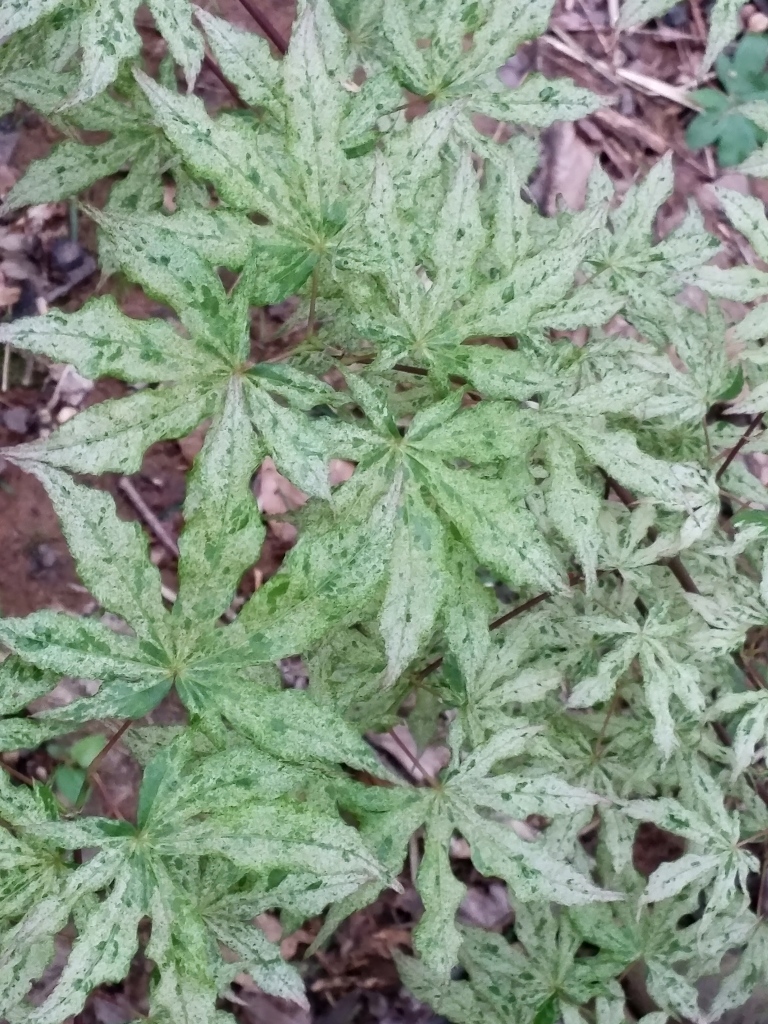
After a decade, I wonder if Floating Cloud maples in varying degrees of sun and shade will ever attain the leaf coloring that I see in the cooler, and less humid environs of Oregon, where I was first attracted to the tree. I don’t expect they will, but in any case, after long lusting for both Golden Full Moon and Floating Cloud maples, there are now two or more of each in the garden.
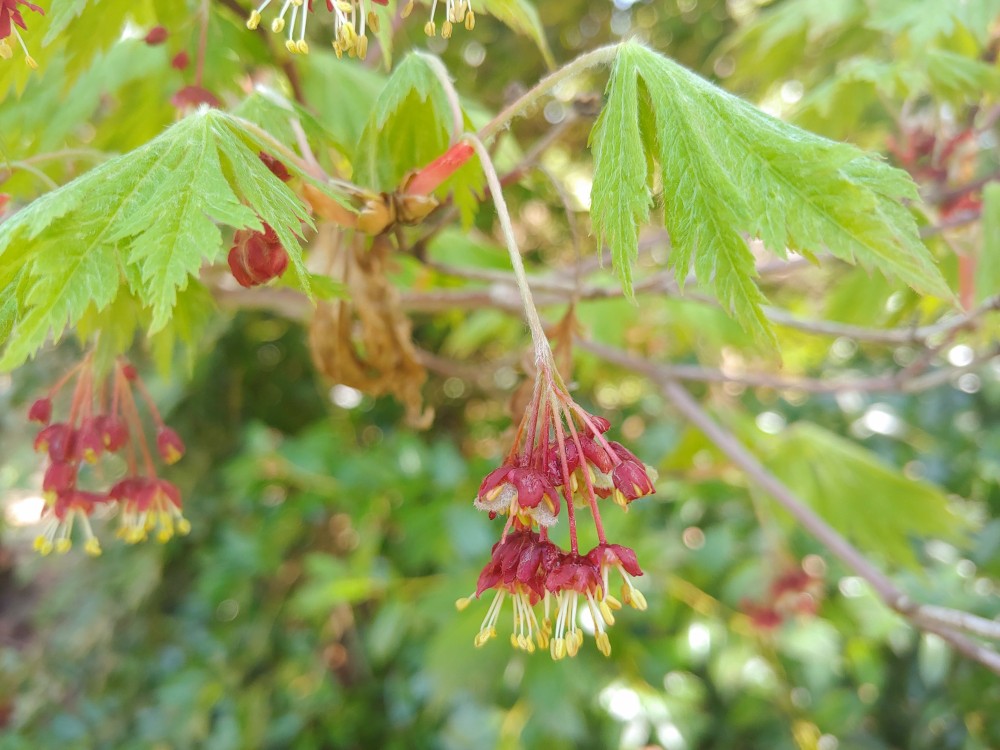
I notice today that the Fernleaf Full Moon maple (Acer japonicum ‘Aconitifolium’) is spreading wider than I imagined, and how could I miss it? I walk under the tree a thousand times, examine foliage, flowers, and dangling seeds close up, but rarely do I stand back to look. Good thing it has plenty of room, except for a holly that is mostly wrapped in its branches. While many maples were planted at six feet and taller, this was much shorter, though stocky from the start. I suppose that the Fernleaf maple is frequently overlooked with its atypical maple foliage, but it has grown to become a personal favorite (depending on the day). Below, you’ll see a few more of the garden’s maples, but certainly not all.
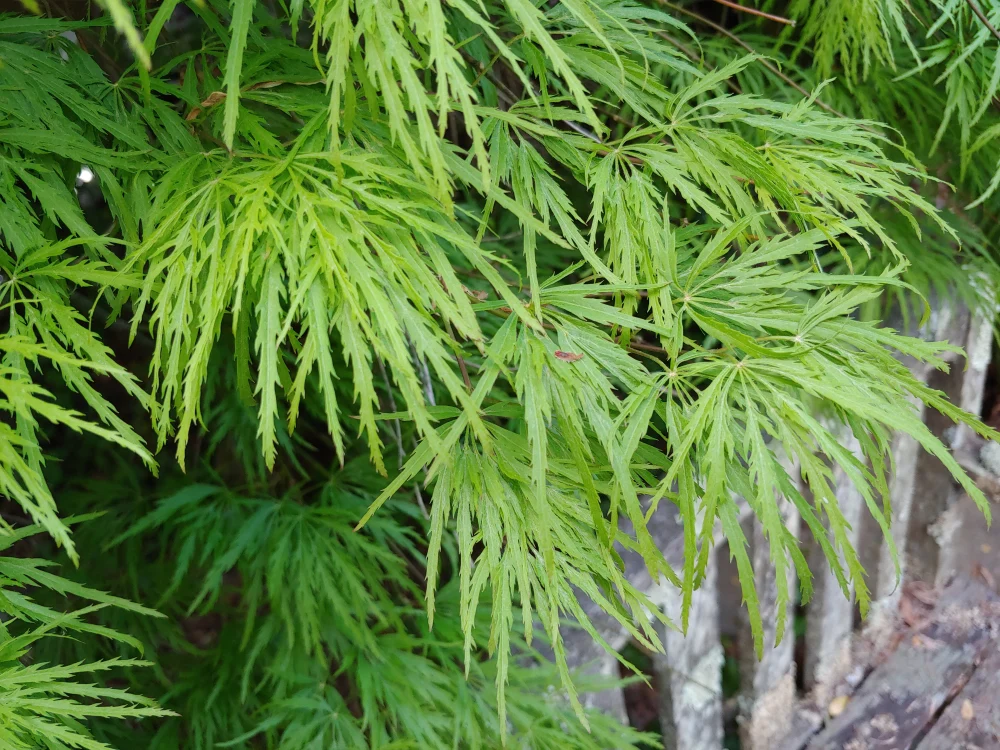
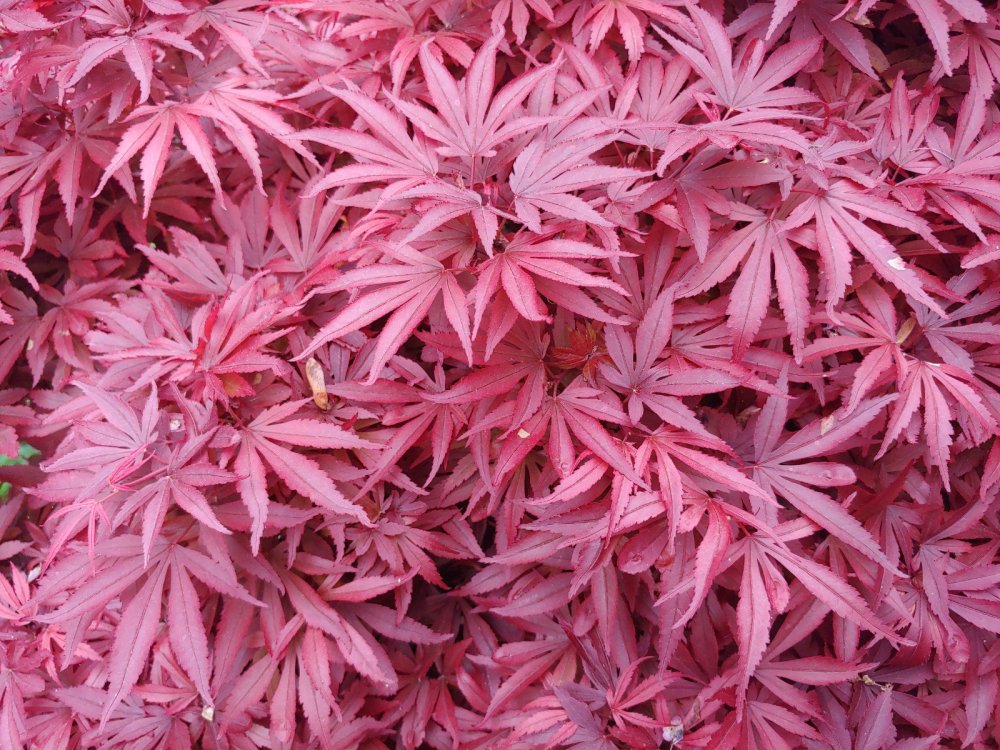
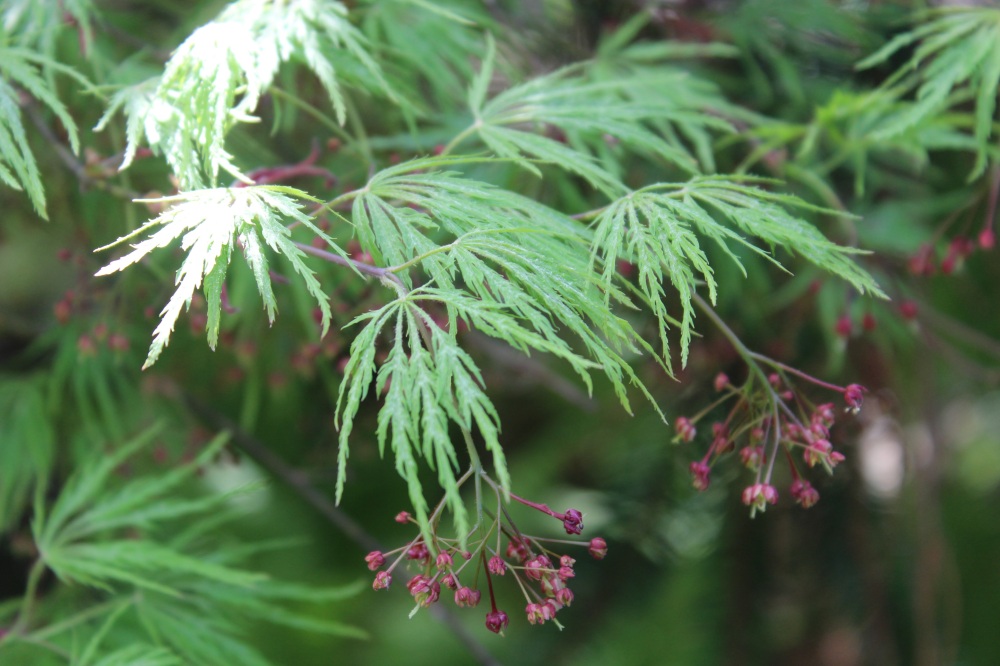
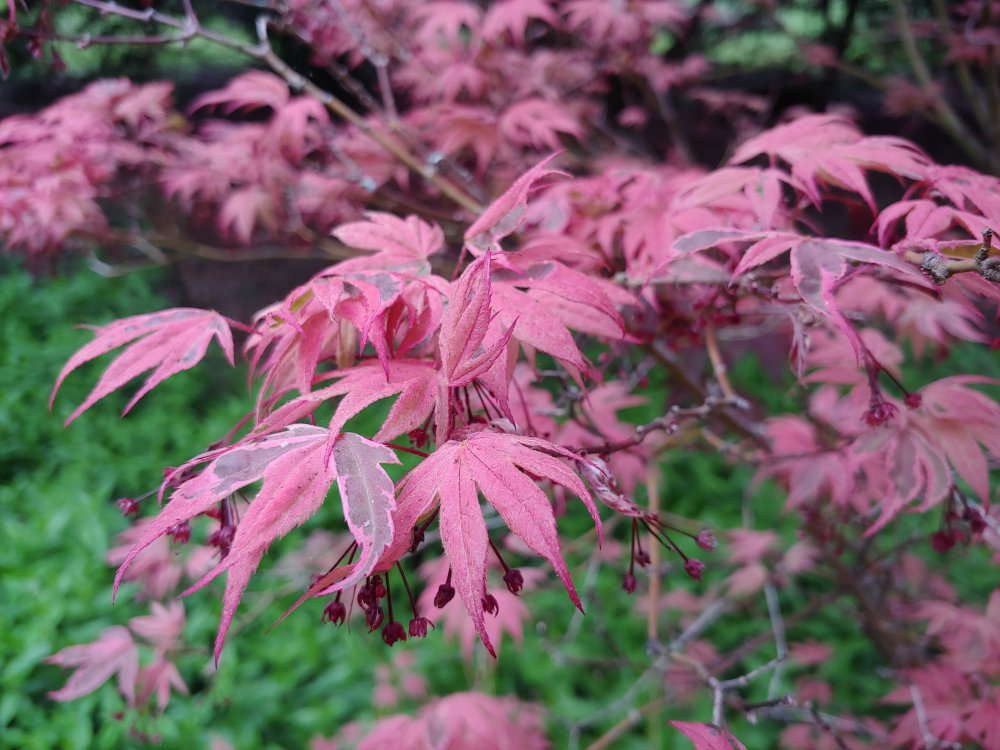
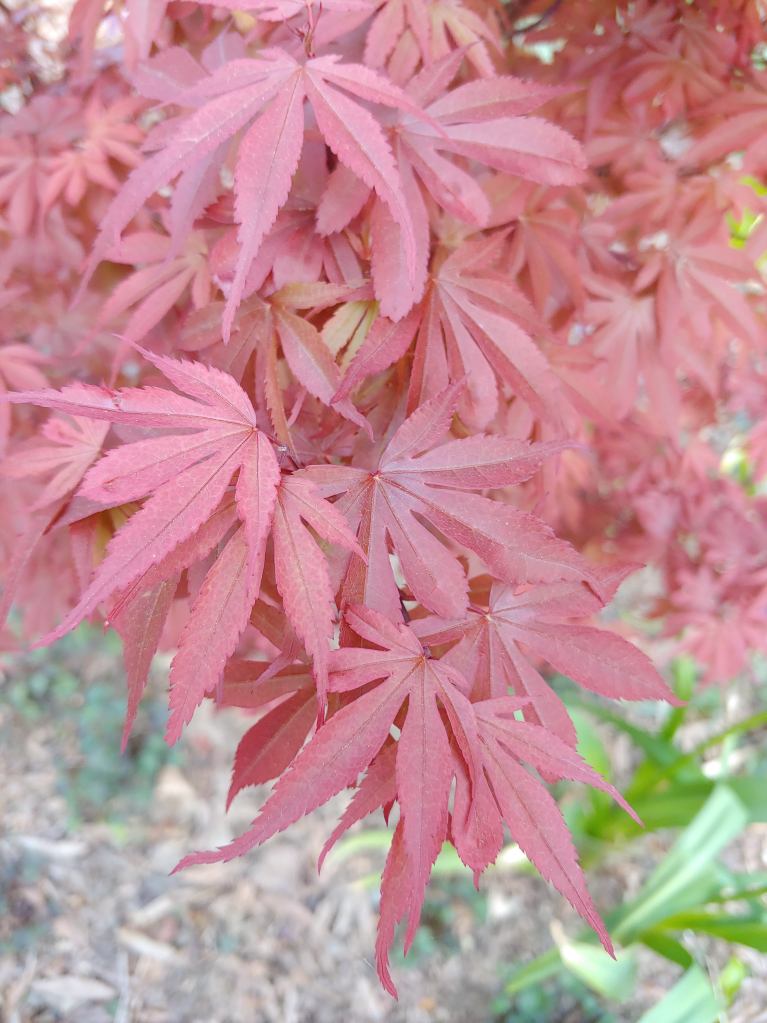
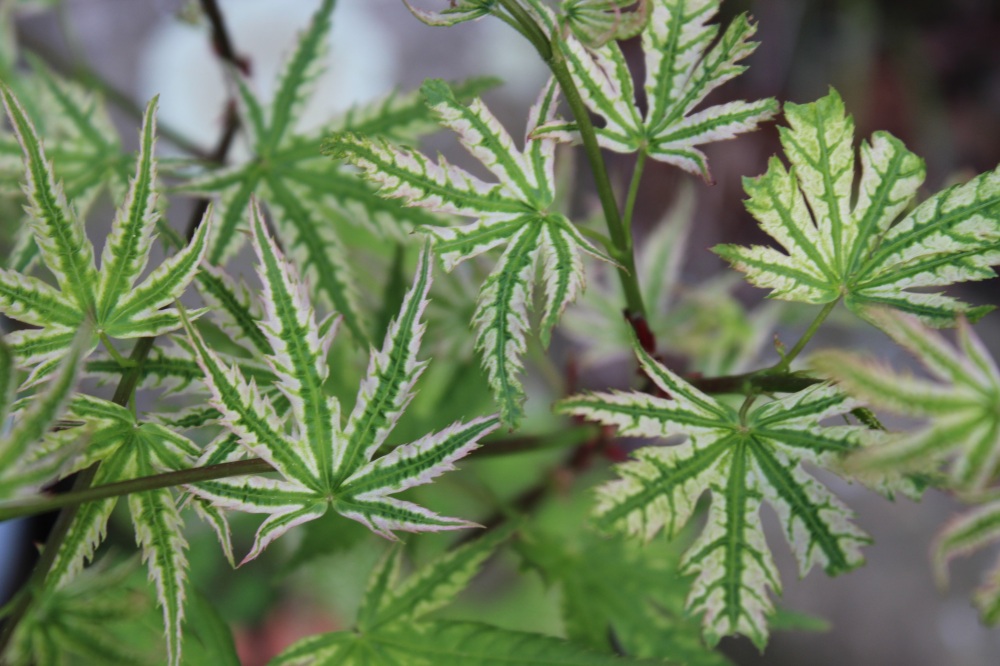
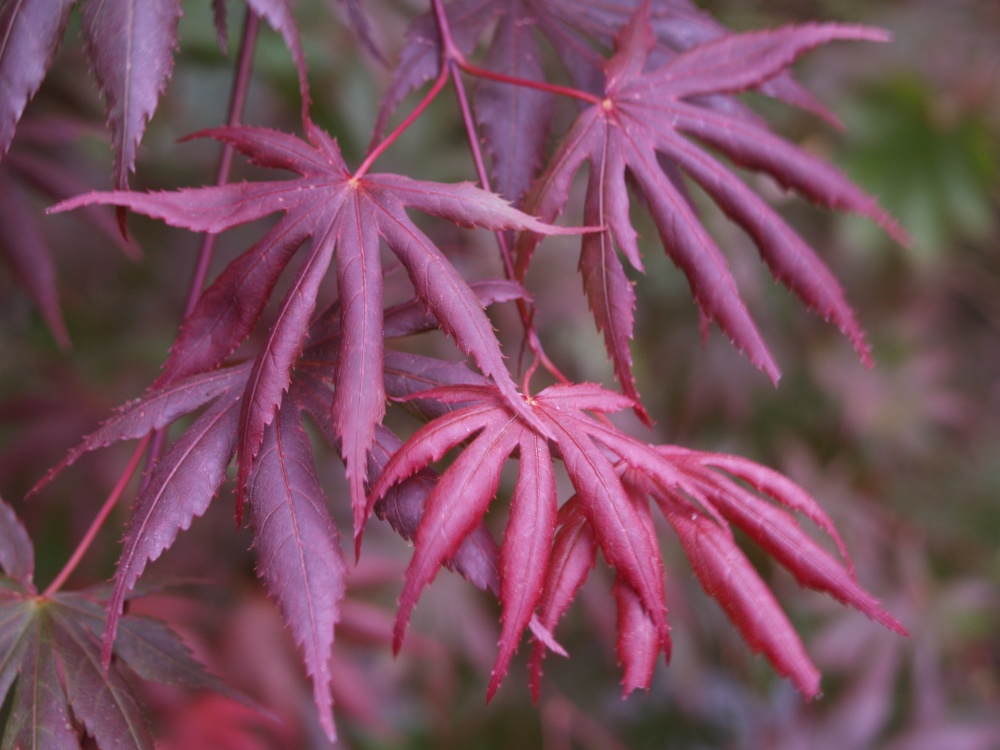
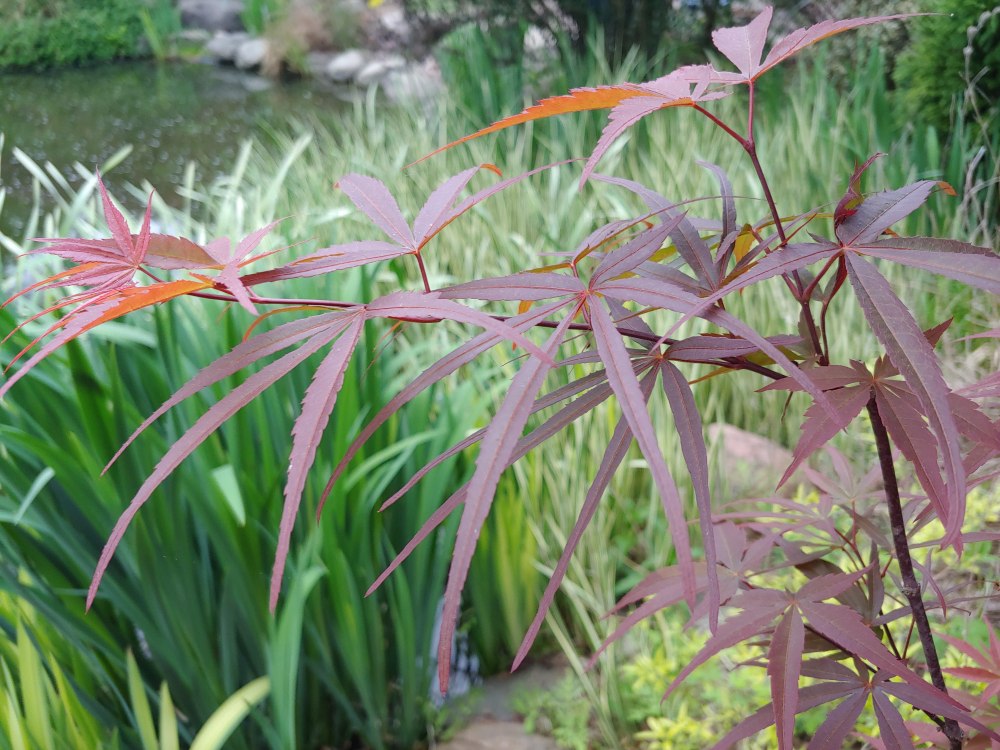
Wow, what beautiful specimens! I’m in agreement with you: no such thing as too many Japanese Maples. Cheers, Ben
Agree, no such thing as too many JMs.
So what pots do you use? Having a hard time finding large, strong lightweight pots (mostly for roses, but also for JMs).
How do you prevent verticillium wilt in the JMs? I received 5 JMs 2 weeks ago, and 2 have succumbed to v wilt (Pung kil and Mikawa nishiki)
I’m using both ceramic and fiberglass pots that are not overly large for the small trees. These were empty at the time, so there was no particular reason for one or the other.In the next year or two I’ll have to figure how to get the Japanese maples out without damaging roots, and hopefully not breaking the pot, but I’ll worry about that then.
I rarely worry about diseases or bugs on any plants, and though occasionally something hits, I’ve experienced few problems. So, I’ve done nothing to prevent verticillium wilt. I lost two maples due to last year’s rainfall, the Coral bark and Oridono nishiki, which was always a disappointment.
Simply beautiful. How deer resistant are your maples?
I’ve never had a problem with deer and Japanese maples, not even with low hanging branches. I spray a deer repellent on select, vulnerable plants, but have never thought to spray the maples.
L
On Thu, May 9, 2019 at 9:57 AM Ramblin’ through Dave’s Garden wrote:
> Dave posted: ” I am distressed that a long established Coral bark Japanese > maple (Acer palmatum ‘Sango-Kaku’) has been lost in the swampy lower garden > (along with two dogwoods and an assortment of shrubs), but this is far from > my favorite maple, so the loss is not hear” >
Dave – may I ask why you mentioned your Coral Bark JM wasn’t a favorite? My husband & I came across a couple over at Lowe’s the other day, & both of us found the orange bark very interesting.
I find the dull green foliage of Coral Bark maples particularly unexciting, and if stems are not cut back older stems are not a vibrant red. I will never cut back stems just for this purpose, so the tree was nothing special for me.
I used to grow Japanese maples on the farm, but NEVER like them. The reason is that they are so trendy in the Santa Clara Valley, where they are not happy. There are certainly some nice specimens about, but the climate is too arid for many types to be happy there. The laceleaf sorts often get roasted. Furthermore, there are no gardeners left who know how to maintain them. The so-called ‘gardeners’ who are here now just shear them like common shrubbery. It is so abhorrent.
Japanese maples are not sheared here, well, nothing is. I do have a problem with people who prune the lower growth of weeping dissectum types so that they look like mushrooms on a stem, but I suppose that makes my gracefully branched maples look better by comparison.
In our heat, red leafed Japanese maples fade in the early years after planting unless they’re given shade from the late afternoon sun, but maples grow like weeds with our year around rain. They don’t mind (too much) clay soils, but they do not tolerate prolonged saturated soils like we’ve had for the past year and never before.
Goodness! EVERYTHING here gets shorn! My colleague and I sometimes try to outdo each other with plants that we have seen shorn, including redwoods, Canary Island pines, coast live oaks, and even pampas grass. If they can reach it, they will shear it.